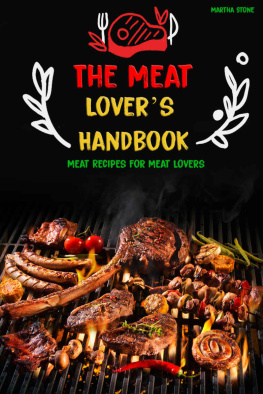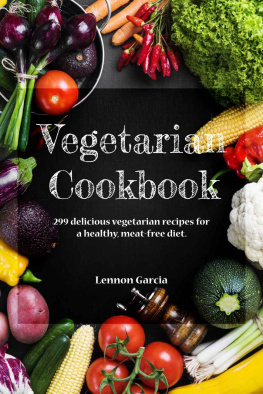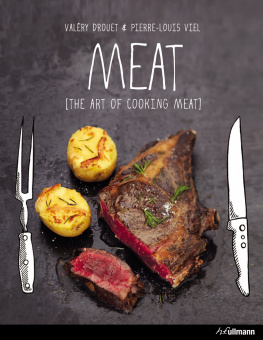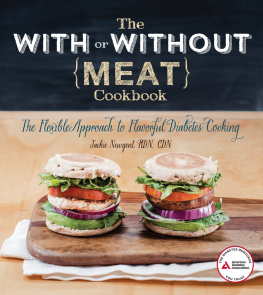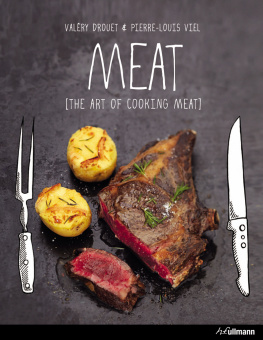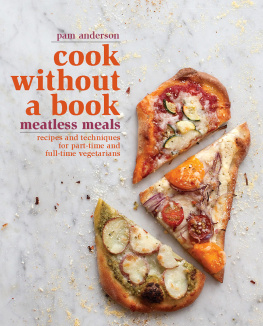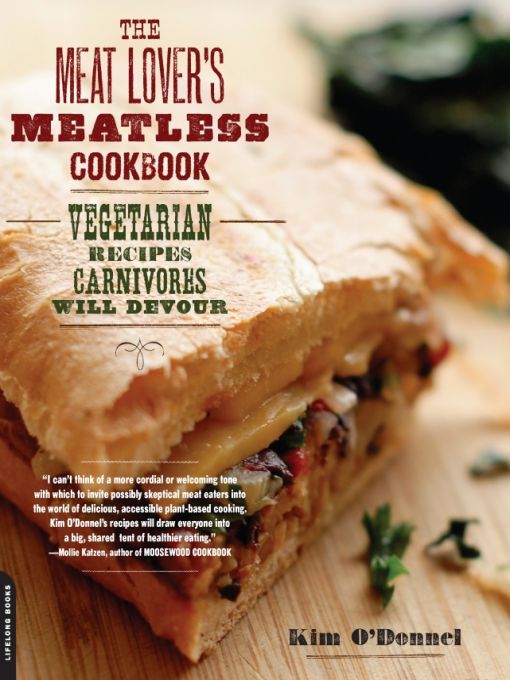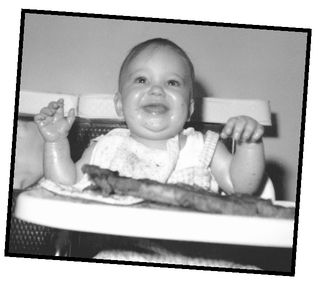Table of Contents
Praise forThe Meat Lovers Meatless Cookbook
The landscape of childhood has changedno longer are our children guaranteed a safe and healthy futurenot in the face of climate change, obesity, and heart disease. In The Meat Lovers Meatless Cookbook, Kim ODonnel inspires us, using wit and wisdom, to recreate our families carnivorous plates. With poignant reason, practical how to advice, and a sensitivity to our culinary challenges and restrictions, The Meat Lovers Meatless Cookbook is an invaluable resource to anyone who eats.
Robyn OBrien, mother of four, Founder, AllergyKids Foundation
FOREWORD
It may be difficult to convince the meat lover that he can radically reduce the proportion of meat in his diet without detriment to health. Many persons adhere to the notion that you are not nourished unless you eat meat; that meat foods are absolutely necessary to maintain the body strength. This idea is entirely without foundation, for the foods mentioned as meat substitutes earlier in this chapter can be made to feed the world, and feed it wellin fact, no nation uses so large a proportion of meat as America.
The above words did not come from a New Age vegetarian cookbook but first appeared almost a century ago, although they remain as timely today as when first written. The cookbookFoods That Will Win the Warwas published in 1918 in an effort to conserve food resources as the nation battled the war to end all wars.
Americans have long had an affinity for red meat. The authors of Foods That Will Win the War cited statistics from the U.S. Food Administration: As a nation we eat and waste 80 percent more meat than we require to maintain health. Fast-forward to the year 2010, and government data reveal that Americans still cant seem to get enough meat. The U.S. Department of Agriculture says men in the United States consume 170 percent of the recommended daily allowance (RDA) of meat, while women eat 135 percent.
Overconsumption and production of meat poses risks not only to our health but also to alleviating hunger and to the health of the planet. Global demand for food animal products is at an unsustainable level and continues to increase. Many health experts attribute the overconsumption of meat with its saturated fat to increased risk of obesity, diabetes, and cardio-vascular disease. Reducing the amount of meat we eat just one day a week, particularly meat from industrially produced food animals, can help reduce greenhouse gas emissions and many other negative environmental and public health effects attributed to industrial food animal production.
The U.S.-based Meatless Monday Campaign was first launched as a simple way for people to reduce their consumption of saturated fat, found mainly in meat and high-fat dairy products, by the 15 percent the Surgeon Generals Healthy People 2010 recommended in 2000 as a goal for the nation over the next decade. For the past seven years, the Johns Hopkins Bloomberg School of Public Health and the Johns Hopkins Center for a Livable Future (CLF) have supported the nonprofit initiative with technical assistance and scientific advice. Meatless Mondays mission has recently expanded to not only highlight health issues associated with high meat diets, but also to help communicate how less meat consumption can protect the health of our planet by reducing greenhouse gas emissions, minimizing water and fossil fuel usage, decreasing air and water pollution, and alleviating food shortages by using grains and legumes to feed people directly rather than to sustain pigs, poultry, and cattle.
The CLF promotes research about the interrelationships among diet, food production, environment, and human health. Much of our work focuses on understanding food environments and their influence on eating behaviors; identifying what helps people adopt healthier eating behaviors; and creating food environments so that people have access to nutritious, affordable, culturally appropriate, and healthy food on a regular basis.
As the director of the CLF and one of the first supporters of the Meatless Monday Campaign, I am delighted that Kim ODonnel has written a practical cookbook that will help people who are used to eating meat almost every day of their lives discover the pleasure of cooking meatless meals without feeling as though a radical change in their diet or, more important, a sacrifice in taste is required. I look forward to trying out Kims recipes every Monday, and I hope you do, too.
Robert S. Lawrence, M.D.
Founding Director, Johns Hopkins Center for a Livable Future
Center for a Livable Future Professor and Professor of Environmental
Health Sciences, Health Policy and International Health, Johns Hopkins
Bloomberg School of Public Health
INTRODUCTION
LIFE BEGINS WITH STEAK....
At least mine did. See Exhibit A on the right. Thats me, documented in gloriously greasy detail in this Polaroid, circa 1967. Yes, instead of a teething ring, my mother gave me a T-bone to gum on. I was hooked.
Back in the day, meat was what we had for dinner (and lunch and breakfast), with applesauce as a vegetable. My love for the bone was unbounded and soon expanded to poultry, fried chicken in particular. Its what I insisted on for my seventh birthday party. (I later used it to seduce the man who would become my husband, lest you think this story ends on the vegetarian side of the tracks.)
But in the 1980s my fathers (and paternal grandmothers) fatal heart attacks brought an end to our familys meat marathon. Alarmed by our dangerously high cholesterol levels, the doctors insisted on it.
My mother did a clean sweep of the pantry. We went cold turkey on cold cuts. We switched from butter to margarine (as if we knew better then?). Full fat became skim milk, and to my great horror: no more bacon and eggs. It was hell. Our familys all-or-nothing approach showed no understanding of eating in moderation.
The pent-up cravings exploded a few years later when I was in college. I tossed aside the doctors advice and renewed my relationship with an old friend, the pepperoni pizza. As a college grad, my budding interest in the kitchen literally fanned the flames, and I maintained a meat-heavy diet, adding a few new recipes from such books as The New Basics Cookbook by Julee Rosso and Sheila Lukins. When I needed a good rationalization for my meat-eating ways, I looked at my roommate, Kat, who called herself a vegetarian and lived on potatoes, grilled cheese sandwiches, and ice cream. How healthy could that be?
The next twenty years only led to more of the same. I have formal culinary training and a career as an established online food personality. Ive traveled and studied cuisines, techniques, ingredients, and tastemakers. Ive equipped my batterie de cuisine and built an impressive library of cookbooks. And to this day, meat still figures into my life in a big, big way.




